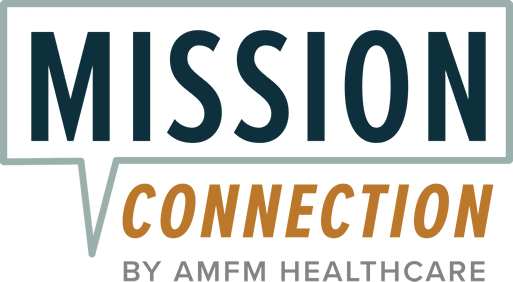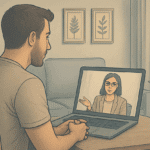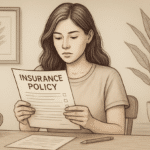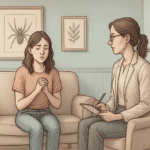Veterans and Anxiety Disorders: Treatment Options That Work

Anxiety disorders in veterans are more common than most people realize, with around 22% of veterans showing anxiety symptoms.1 From social anxiety to panic attacks, it can feel overwhelming…but it’s also treatable.
If you’re concerned about anxiety in yourself or someone you care about, Mission Connection can help. On this page, we’ll dive into anxiety disorders in veterans, including:
What anxiety disorders are- Why veterans are at greater risk of anxiety
- Options for anxiety relief for veterans, exploring therapy, medication, and lifestyle changes
- The VA services available to you
- Where to find professional support for anxiety in veterans
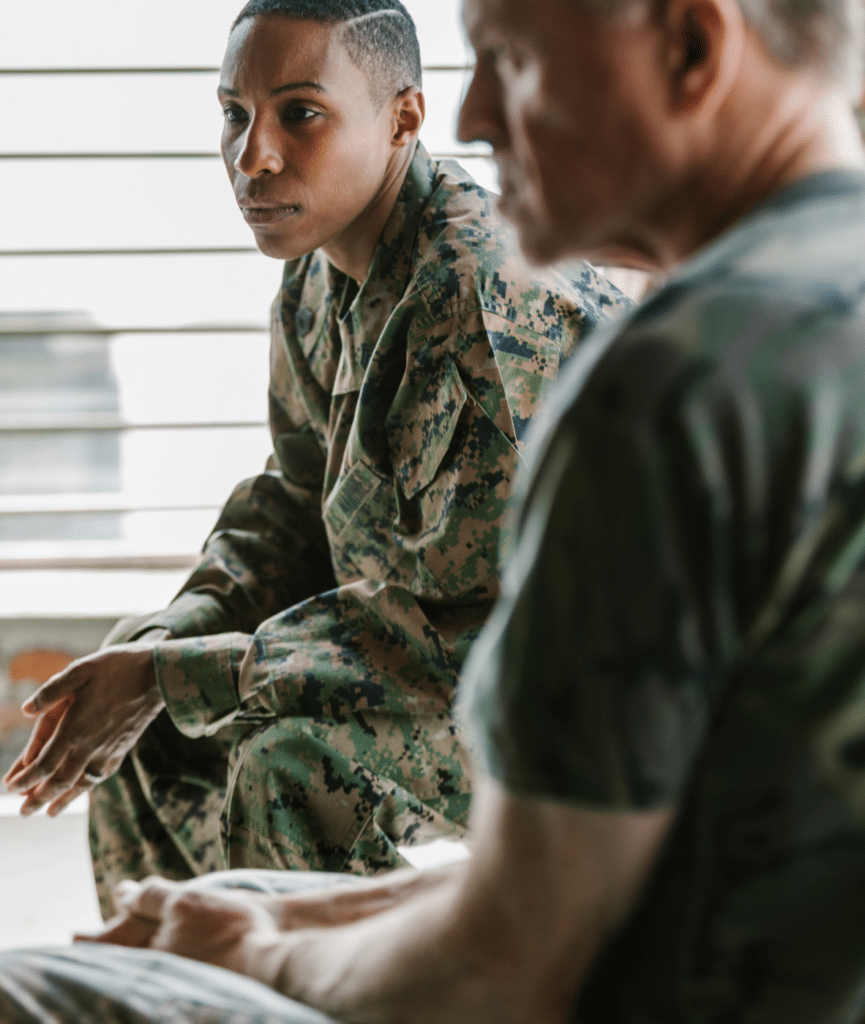
Understanding Anxiety Disorders in Veterans
With so many Veterans showing signs of anxiety, it can be helpful to understand the different conditions they may be experiencing. The following information takes a closer look at how the different types of anxiety can affect veterans.
Veterans With Generalized Anxiety
Social Anxiety in Veterans
Post-Deployment Anxiety
Feeling anxious after coming home from deployment isn’t unusual. Transitioning back into civilian life can be exciting, but it can also be challenging. For instance, the experiences you had in the military may have left you on constant high alert for threats. If you relate to this, you may be experiencing post-deployment anxiety.
Obsessive-Compulsive Disorder (OCD)
OCD is when repetitive, intrusive thoughts (obsessions) trigger you to perform certain tasks to feel better (compulsions). For example, an obsession with contamination, safety, or illness may lead someone to compulsively clean. Additionally, worrying that you haven’t completed an action could cause you to believe something bad will happen. Fortunately, OCD can be treated effectively with therapy.
Panic Disorder (PD)
Panic Disorder is characterized by multiple bouts of overwhelming physical and emotional fear and panic. These attacks are also linked to avoidance of certain situations or people due to worries about triggering further attacks. Although panic disorder can feel scary, it is treatable.
Anxiety and PTSD in Veterans
Now that you know a bit more about anxiety disorders, let’s look at why veterans may be more prone to developing them.
Why Are Veterans at Greater Risk for Anxiety?
Combat and trauma: Being in life-threatening situations and seeing people get injured or killed can lead to PTSD and anxiety.- Deployment stress: Separation from family and loved ones for months or years at a time can increase stress and anxiety.
- Military sexual trauma: Experiencing harassment or assault during service can have a significant impact on mental health.
- Transitioning to civilian life: This can be a time of stress and challenges, such as anxiety around finding employment and establishing your place in your community.
Several factors can contribute to anxiety development, and coping with anxiety after military service can feel like an uphill struggle. Thankfully, this is a battle you don’t have to face alone; help and support are available. Anxiety disorders can be effectively treated, and the next section covers your options for treatment.
Effective Therapy for Anxiety in Veterans
Cognitive behavioral therapy for veterans, more commonly known as CBT, is short-term, structured, and helps you to understand your anxiety better. It gives you a safe space to look at and tackle any distressing thoughts or feelings you have, confront your fears, and learn new skills for managing anxiety.
CBT is recommended as a veteran mental health treatment for anxiety by the VA, as research shows that it is particularly effective in veterans with anxiety.5 In addition, multiple research studies show that CBT effectively reduces symptoms of anxiety in the general population.6,7
However, there are other therapies that can be effective for treating anxiety, including:
Mindfulness-Based Cognitive Therapy (MBCT): Research on the use of mindfulness has increased since the 2010s and shows that mindfulness-based interventions can have similar outcomes to CBT.8- Acceptance and Commitment Therapy (ACT): Studies show that ACT can reduce symptoms of anxiety by encouraging you to accept difficult emotions rather than fighting against them, and finding ways to move forward with coping strategies.9
- Exposure and Response Prevention Therapy (ERP): ERP can be effective for those with specific phobias or obsessive-compulsive disorder, as well as anxiety. It allows you to face your fears in a manageable way.10
- Trauma-Focused Therapy: Trauma-focused therapies such as EMDR can be effective for treating veterans with anxiety and PTSD, allowing them to process the trauma they have experienced.11
Anxiety is highly treatable, and with the right support, you can begin to feel calmer and happier. Therapy lets you get to the root of what is causing your anxiety, bringing long-lasting positive changes.
Medication for Anxiety Disorders
When it feels like anxiety is taking over your life, anti-anxiety medications can be a valuable treatment option, especially when used alongside therapy. These medicines help to balance out the chemicals in the brain that control your mood, which is how they work for reducing anxiety in veterans. Different types of medication can be used to treat anxiety, including:
- SSRIs (selective serotonin reuptake inhibitors): These affect your levels of a chemical called “serotonin,” also known as the “feel good” chemical, which can help you feel calmer and happier. SSRIs are usually the first line of medications tried by healthcare providers.
- SNRIs (serotonin-norepinephrine reuptake inhibitors): SNRIs increase serotonin and norepinephrine, the latter being connected with the “fight or flight” response.
- TCAs (tricyclic antidepressants): These affect your serotonin levels, but can have more side effects than the medications mentioned above, so they are usually used when SSRIs or SNRIs have not had the results you hoped for.
- Benzodiazepines: These work on a chemical called “GABA” in the brain to calm and slow down your nervous system. They are also known as sedatives because they can make you feel relaxed and sleepy.
When it comes to treating anxiety disorders in veterans, a combined approach of therapy and medication can be very effective. For instance, medication can help to take the edge off anxiety and make you feel calmer, putting you in a good headspace to get the most out of therapy.
Lifestyle Changes for Veteran Anxiety
Mindfulness: Developing a mindfulness practice can help keep you in the present rather than worrying about the future or the past. Try a breathing exercise, meditation, or mindful movement to get started.- Exercise: When you are physically active, mood-boosting chemicals called “endorphins” are released into your body. Exercise also helps to release tension, improve your sleep, and potentially works just as well as medication for some people when it comes to reducing anxiety symptoms.12
- Diet: Eating a healthy, balanced diet is important for your physical and mental health.
- Sleep: Studies show that poor sleep can actually make anxiety worse, so make time for a good sleep routine every night.13
VA Services for Veteran Anxiety
Information about anxiety conditions- Helplines you can call 24/7 for support
- Treatment options, including medication and therapy, such as CBT
- Online veteran self-help
- Mobile apps to support you in managing mental health conditions
The VA website contains more information about VA services for anxiety disorders.
Starting Treatment: How Mission Connection Can Help You Take the Next Step
If you’re a veteran struggling with anxiety, the hardest part can be reaching out for help. But taking this first step doesn’t need to be overwhelming, and you don’t have to do it alone.
At Mission Connection, we make starting treatment for anxiety in veterans as straightforward and supportive as possible. Our admissions team is available to answer any questions you have, listen to your concerns, and guide you through every step of the process. First, you’ll speak with one of our specialists and will be asked to do an online assessment so that we can understand how to help in a way that works.
We offer a range of services and create a treatment plan tailored to your specific needs to help you achieve your goals. Our treatment options include:
- Residential Treatment – for those wanting 24/7 support and care.
- Intensive Outpatient Programs – offering a highly supportive and structured environment, allowing you to rest and recover at home in the evenings.
- Outpatient Therapy – including CBT and trauma-focused therapy.
- Telehealth – letting you access all the benefits of outpatient therapy from the comfort of your home.
We understand that cost can be a worry to some people when it comes to mental health treatment. That’s why you’ll find clear information about all the financial payment options available here. From working with insurance companies to payment plans and sliding scale fees, we want to help you get the right support at the right time.
Healing is possible, and you deserve it. Contact us today to talk with someone who understands anxiety disorders in veterans – and knows how to help.
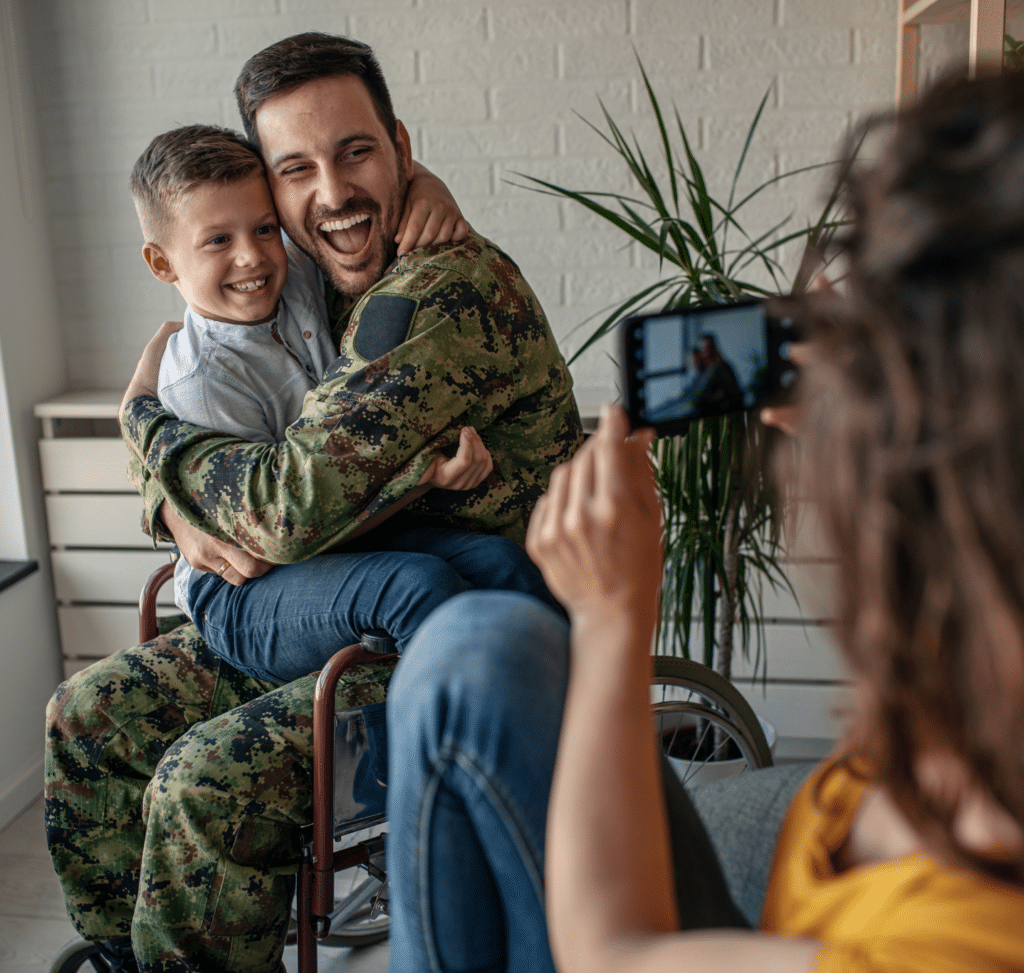
References
- Macdonald-Gagnon, G., Stefanovics, E. A., Potenza, M. N., & Pietrzak, R. H. (2024). Generalized anxiety and mild anxiety symptoms in U.S. military veterans: Prevalence, characteristics, and functioning. Journal of Psychiatric Research, 171, 263–270. https://doi.org/10.1016/j.jpsychires.2024.02.013
- American Psychological Association. (n.d.). Generalized anxiety disorder. APA Dictionary of Psychology. Retrieved June 6, 2025, from https://dictionary.apa.org/generalized-anxiety-disorder
- American Psychological Association. (n.d.). Social anxiety. APA Dictionary of Psychology. Retrieved June 6, 2025, from https://dictionary.apa.org/social-anxiety
- Byrne, S. P., Fogle, B. M., Asch, R., Esterlis, I., Harpaz-Rotem, I., Tsai, J., & Pietrzak, R. H. (2021). The hidden burden of social anxiety disorder in U.S. military veterans: Results from the National Health and Resilience in Veterans Study. Journal of Affective Disorders, 291, 9–14. https://doi.org/10.1016/j.jad.2021.04.088
- Liu, J. J., Ein, N., Forchuk, C., Wanklyn, S. G., Ragu, S., Saroya, S., Nazarov, A., & Richardson, J. D. (2023). A meta-analysis of internet-based cognitive behavioral therapy for military and veteran populations. BMC Psychiatry, 23(1). https://doi.org/10.1186/s12888-023-04668-1
- Bogucki, O. E., Craner, J. R., Berg, S. L., Wolsey, M. K., Miller, S. J., Smyth, K. T., Johnson, M. W., Mack, J. D., Sedivy, S. J., Burke, L. M., Glader, M. A., Williams, M. W., Katzelnick, D. J., & Sawchuk, C. N. (2020). Cognitive Behavioral Therapy for Anxiety Disorders: Outcomes from a Multi-State, Multi-Site Primary Care practice. Journal of Anxiety Disorders, 78, 102345. https://doi.org/10.1016/j.janxdis.2020.102345
- Hofmann, S. G., Asnaani, A., Vonk, I. J. J., Sawyer, A. T., & Fang, A. (2012). The Efficacy of Cognitive Behavioral therapy: A review of Meta-analyses. Cognitive Therapy and Research, 36(5), 427–440. https://doi.org/10.1007/s10608-012-9476-1
- Hofmann, S. G., & Gómez, A. F. (2017). Mindfulness-Based Interventions for Anxiety and Depression. Psychiatric Clinics of North America, 40(4), 739–749. https://doi.org/10.1016/j.psc.2017.08.008
- Gloster, A. T., Walder, N., Levin, M. E., Twohig, M. P., & Karekla, M. (2020). The empirical status of acceptance and commitment therapy: A review of meta-analyses. Journal of Contextual Behavioral Science, 18, 181–192. https://doi.org/10.1016/j.jcbs.2020.09.009
- Song, Y., Li, D., Zhang, S., Jin, Z., Zhen, Y., Su, Y., Zhang, M., Lu, L., Xue, X., Luo, J., Liang, M., & Li, X. (2022). The effect of exposure and response prevention therapy on obsessive-compulsive disorder: A systematic review and meta-analysis. Psychiatry Research, 317, 114861. https://doi.org/10.1016/j.psychres.2022.114861
- U.S. Department of Veterans Affairs. (n.d.). Overview of psychotherapy for PTSD. National Center for PTSD. Retrieved June 6, 2025, from https://www.ptsd.va.gov/professional/treat/txessentials/overview_therapy.asp#one
- Anxiety and Depression Association of America. (2025). Exercise for stress and anxiety. Retrieved June 6, 2025, from https://adaa.org/living-with-anxiety/managing-anxiety/exercise-stress-and-anxiety
- Goldstein, A. N., Greer, S. M., Saletin, J. M., Harvey, A. G., Nitschke, J. B., & Walker, M. P. (2013). Tired and apprehensive: Anxiety amplifies the impact of sleep loss on aversive brain anticipation. Journal of Neuroscience, 33(26), 10607–10615. https://doi.org/10.1523/jneurosci.5578-12.2013
- U.S. Department of Veterans Affairs. (n.d.). Anxiety disorder symptoms, types & veteran resources. Mental Health. Retrieved June 6, 2025, from https://www.mentalhealth.va.gov/anxiety/index.asp
